Advertisement
28 Artists Break The Rules At SoWa's Fountain Street Gallery
Most of us spend our days carefully following the rules. From traffic signals to workplace dress codes to cultural dictates that we shake hands when we greet strangers, we obey laws and follow expectations to get along in society. But what if we didn’t?
That is the proposition of “Breaking the Rules,” an exhibit on view Nov. 28 through Dec. 23 at Fountain Street gallery, a South End cooperative relatively new on the SoWa scene since its move from Framingham last year. The only rule of this show is that there are no rules. In fact, each participating artist (the 28 core members at the co-op) was asked to break a rule by engaging in work that would somehow challenge cultural or personal norms. The result is a panoply of meditations on the subject holding relevance on both the personal and political levels.
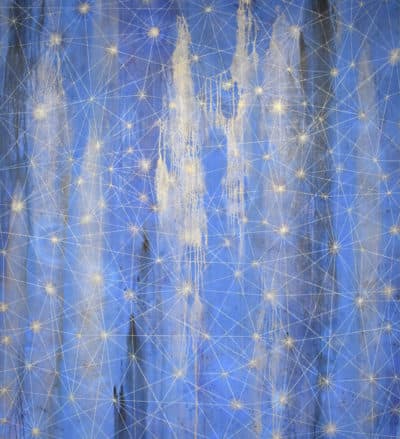
Ways of overstepping the rules can be as simple as breaching the bounds of one’s own art practice. Denise Driscoll, a multidisciplinary artist who teaches at Lesley University’s College of Art and Design, has for years made paintings containing only circles, squares and dots, with an occasional transgression into ovals. For this show, she offers “Cradle” where she has flung aside her self-imposed formal constraints to allow drips, splatters, puddles and even lines. It might seem like a small way to transgress, but sometimes, the smallest rules are the hardest to break.
Other artists are concerned with much larger infractions, both artistic and political.
Alexandra Rozenman is an Allston artist who grew up in Soviet Russia.
“In the Soviet Union where I was born, the word 'rules' meant something like a straitjacket,” she recounts in her artist statement. “Public and private lives of individuals were 'ruled' by unbreakable rules imposed by the political regime. In Soviet Russia, in the communal apartments where we lived, privacy was excluded from everyday life reality. There was no such thing like 'the sacred right to privacy,' as we know it in liberal western contexts. We longed for privacy, but we couldn’t have it. How is it then to break the privacy of an object or subject?”
For this show, Rozenman chose to make the ultimate artistic violation: She took a painting given to her by an ex-admirer (who hopefully isn’t reading this) and painted over it.
“For years I have been looking at this painting, hating its right side while liking the left one,” she writes in her statement. “A few years ago, I took it, covered the right side with light grey paint and got scared. ‘Breaking the Rules’ gave me the incentive to complete the transgression.”
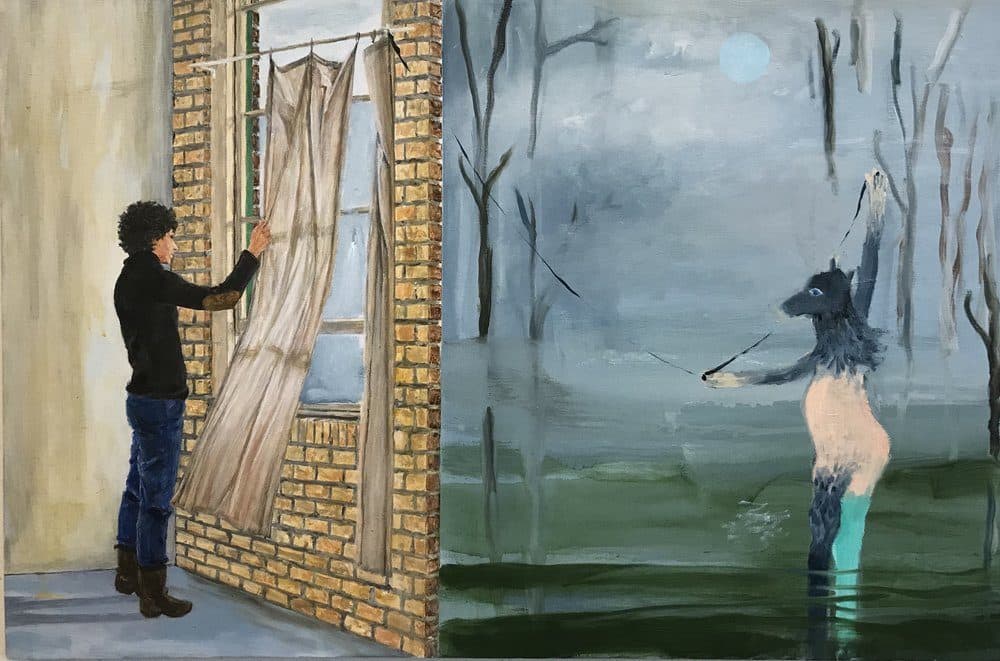
Then there is Daniel Zeese’s playfully evocative “Two Orange Brooms” from his series of “Sex Brooms.” Zeese, who teaches at Boston Architectural College, has found a way to redefine a dreary domestic tool into something flirtatious, alluring, and potentially a lot more fun.
“My 'Orange Brooms' situates us in a world where there are these extravagant and mundane tools that serve a purpose we can’t quite put our finger on,” he says. “They are part of a conversation through a few lenses, an accepted domestic burden that we must buy into to be part of this society, and how we deal with being witness to something we don't quite understand about a person, a blurred area between pleasure and pain.”
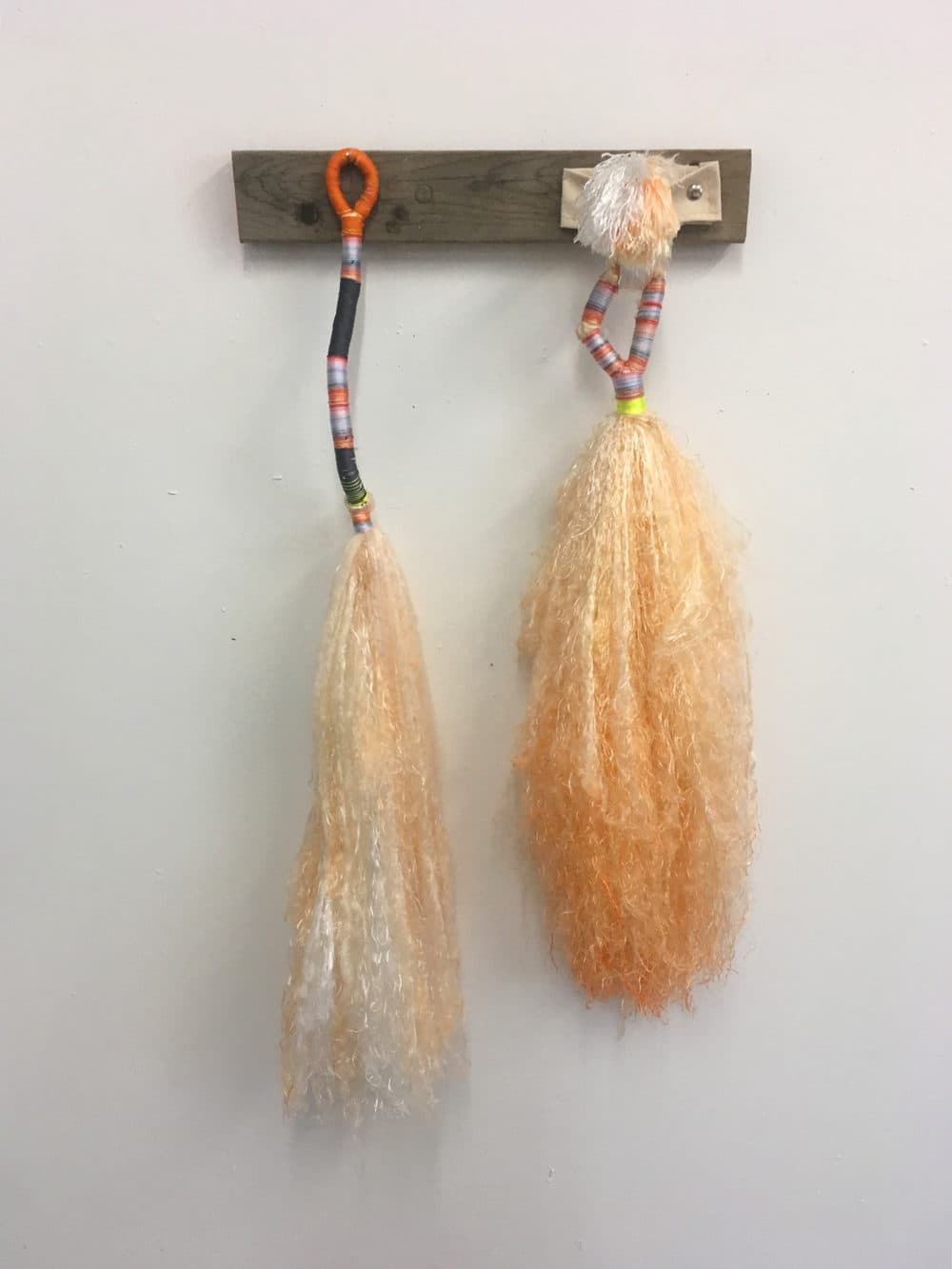
Gin Stone’s work is more overtly political in flavor. Stone, a multimedia artist working on the Cape, creates "humane" taxidermy using recycled material, usually longline fishing gear. For this exhibit, she has created “Mother’s Milk — Spilled,” a bust of a large cat, evidently nursing, whose base is surrounded by bullet casings and other found objects. The intent, she says, is “to address issues such as toxic patriarchy, violence against women and children and hate crimes.”
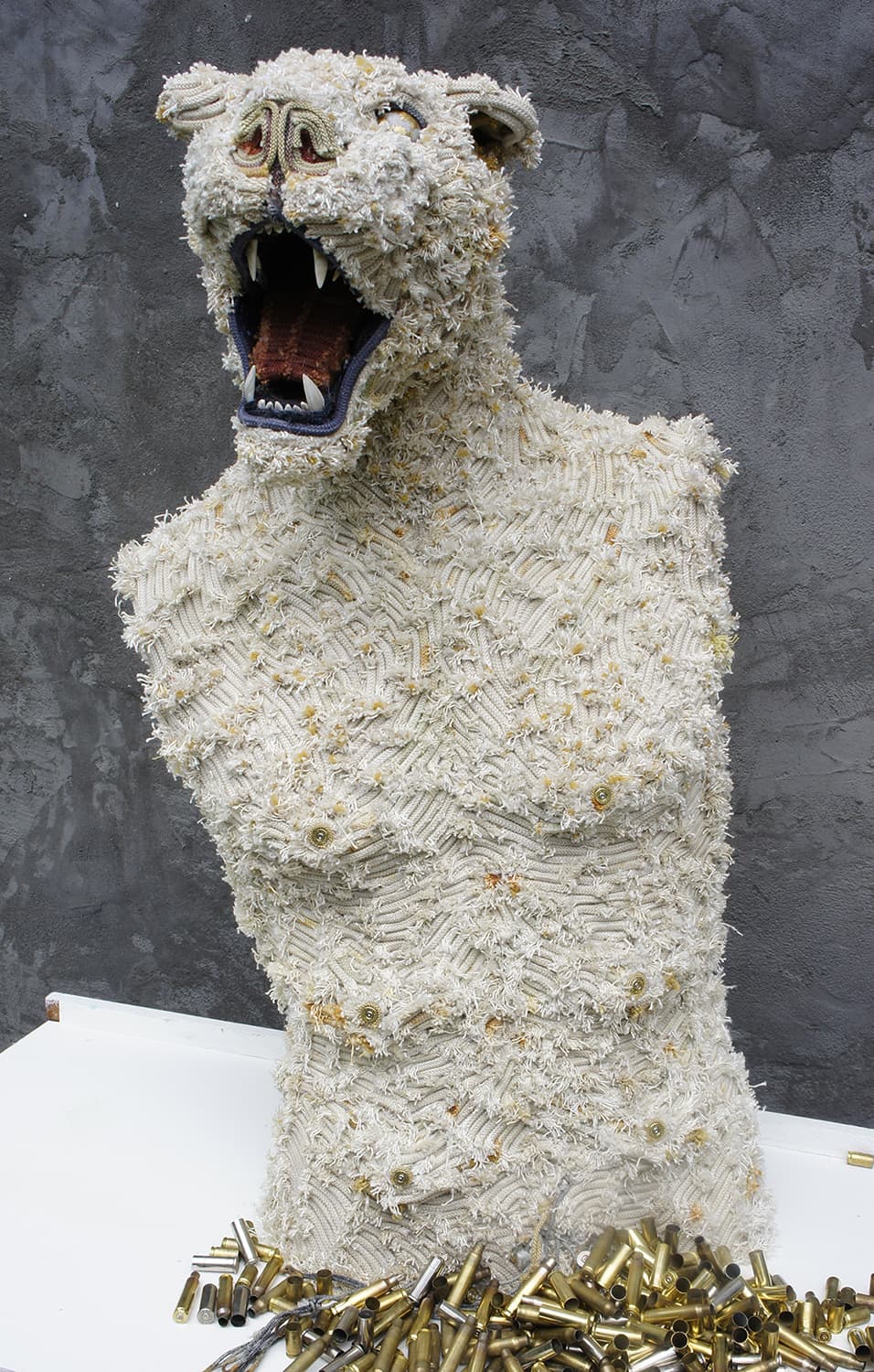
Also in the realm of the overtly political is Sylvia Vander Sluis’ “Choice Without Violence.” Her piece, a painted scarf wrapped around a ribbon, alludes to a woman swathed in clothing, in this case a hijab, camouflaging her physical identity.
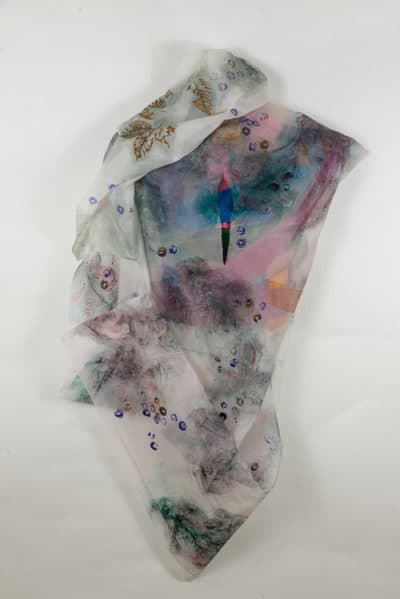
A tear is made down the center of the fabric to reveal a vivid, silk ribbon, which might represent a vibrant identity beneath. Vander Sluis made the work as a statement in support of a Muslim woman being able to choose whether to wear a veil or not, particularly in countries where there currently is no choice.
“I started 'Choice' as a liberal, Western woman outraged with the hijab practice,” she says. “However, while creating this piece, I learned hijab is a very nuanced topic. My simplistic view shifted and influenced how 'Choice' evolved. I hope the viewer will appreciate 'Choice' as a visual experience, as well as an example of how we need to keep our minds open to new information.”
Maynard painter and sculptor Leslie Zelamsky chose to take the show’s mandate more literally. Her sculpture “Offence” is a white picket fence set on its side to create a different sort of barrier, or perhaps dropping the barrier altogether.
“Am I committing an offence by crossing your fence?,” she asks. “What is this idea of owning land, of boundaries that separate and divide? Lay them down and come on in. Welcome!”
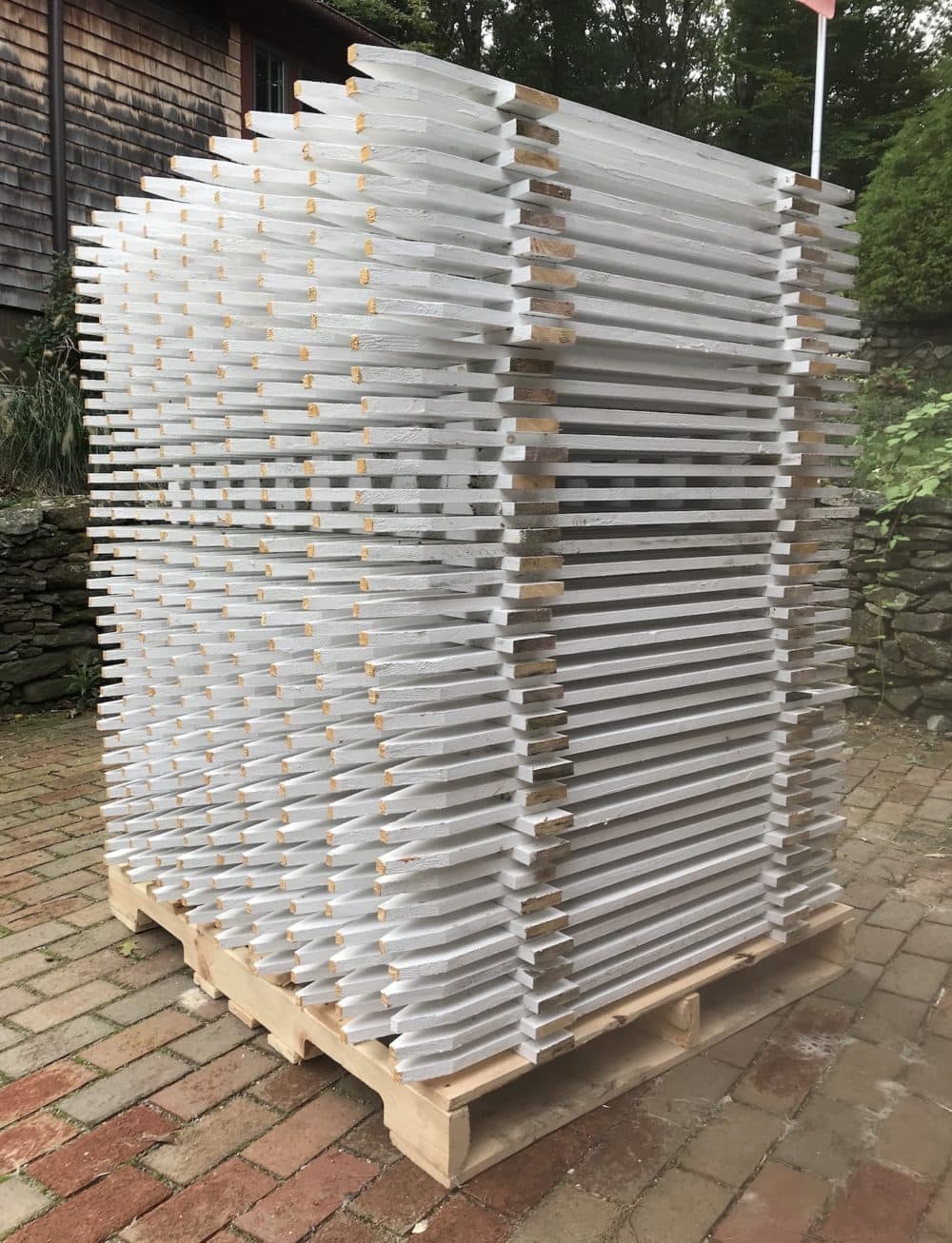
Show curator Allison Maria Rodriguez, herself a member of Fountain Street gallery (who will have work in the show along with gallery founders Marie Craig and Cheryl Clinton) says she wanted to do a show that could address our cultural moment.
“I wanted to do something that would speak to the current political challenges that we live in,” she says. “But at the same time, I didn't want to say, ‘Everyone make a piece of political art.' Everyone is pretty diverse in what their interests are and what their backgrounds are. A lot of them don't make political work. But I wanted them to think about the role of the artist as a participant in cultural discourse.”
Part of the discussion here is not just how each individual artist might break the rules, but the larger role artists can play in cultural dialogue, especially right now, in a political environment that seems to grow ever more divisive.
“Whether it's comedy on television or political art … I do think that people look to the arts for how are we going to get through, or what is the way we can see something differently,” she says. “I do think art has power in that sense.”

The artists at Fountain Street gallery would seem to agree.
“Personally, I need artists to help me see past my own assumptions and immediate concerns, to draw me into a bigger conversation than the current news cycle or what’s for dinner,” says Driscoll. “I make art to negotiate the gap between feelings, facts, and the constant barrage of information that comes from walking around with an iPhone in my pocket, a laptop in my bag, and immediate access to more than I can watch, read or hear in multiple lifetimes.”
Reflects Rozenman: “The artist is born within a definite cultural context; at the same time the artist enlarges, enriches and sometimes surpasses the cultural contexts and codes, in the sense that art makes us see things in an unconventional way. From this point of view, art often rebels against cultural conventions and taboos. But even in its most rebellious and revolutionary drive, art reminds us what remains universal despite our irreducible cultural pluralism and diversity. Art reminds us what it is like to be and remain human.”
“Breaking the Rules” runs from Nov. 28 to Dec. 23. A reception will be held Friday, Dec. 7, from 6 to 8 p.m. A participatory art event is scheduled for Saturday, Dec. 8, 2 to 4 p.m. The event will be part of the Boston Art Dealers Association’s second Saturday series.
